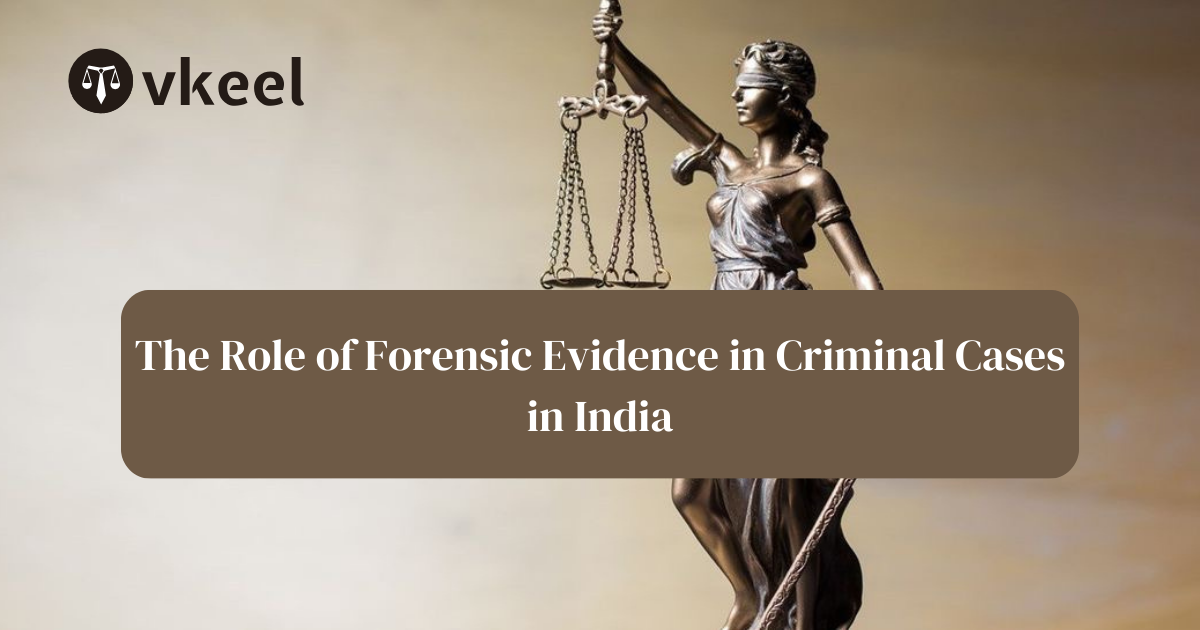The Role of Forensic Evidence in Criminal Cases in India
By Himanshu Kumar
Table of Contents
Introduction
Forensic evidence has emerged as a critical component in the administration of justice, particularly in criminal cases. Its role in identifying perpetrators, corroborating testimonies, and exonerating the innocent cannot be overstated. In India, the legal framework has progressively evolved to incorporate forensic science, leading to significant amendments and landmark judgments that underscore its importance.
The primary reason for the need for forensic evidence in criminal cases is to ensure the accuracy and reliability of the judicial process. Forensic evidence provides objective, scientific data that can corroborate or refute testimonies, establish links between suspects and crime scenes, and identify perpetrators with a high degree of certainty. In a legal system where the stakes are incredibly high, particularly in criminal cases that can result in severe penalties, including life imprisonment or death, the importance of reliable evidence cannot be overstated. Forensic evidence helps to minimize wrongful convictions and ensures that justice is served by identifying the true perpetrators.
Additionally, forensic evidence enhances the credibility of the criminal justice system by providing clear and compelling proof that can withstand scrutiny. In an era where technological advancements have made crimes more sophisticated, traditional investigative methods are often insufficient. Forensic science bridges this gap, offering advanced tools and techniques to uncover critical details that might otherwise be missed. This not only aids in solving crimes more efficiently but also strengthens public trust in the legal system by demonstrating a commitment to thorough and accurate investigations.
Historical Context and Evolution
The use of forensic evidence in India dates back to the early 20th century, with the establishment of the first forensic laboratory in 1904 in Calcutta (now Kolkata). Since then, the field has expanded to include various branches such as DNA analysis, fingerprinting, toxicology, and digital forensics. The evolution of forensic science in India has paralleled advancements globally, albeit with challenges unique to the country’s socio-legal landscape.
Legal Framework Governing Forensic Evidence
The Indian Evidence Act, 1872, is the primary legislation governing the admissibility of evidence, including forensic evidence. Section 45 of the Act specifically deals with expert testimony, stating that opinions of experts are relevant when the court has to form an opinion upon a point of foreign law, science, art, identity of handwriting, or finger impressions. Over the years, several amendments and judicial interpretations have shaped the application of this provision.
Key Amendments and Judicial Interpretations
- The Code of Criminal Procedure (Amendment) Act, 2005: This amendment introduced Section 53A, which mandates the examination of a person accused of rape by a medical practitioner. The medical examination includes collecting samples for DNA profiling, thus emphasizing the importance of forensic evidence in sexual assault cases.
- The Criminal Law (Amendment) Act, 2013: In the aftermath of the Nirbhaya case, this amendment brought significant changes to laws related to sexual offenses. Section 53A of the CrPC was further strengthened to ensure that forensic evidence, particularly DNA profiling, plays a crucial role in the investigation and prosecution of sexual offenses.
Landmark Judgments
- State of Maharashtra v. Damu Gopinath Shinde and Others (2000): In this case, the Supreme Court highlighted the importance of DNA evidence. The Court acquitted the accused due to the lack of conclusive DNA evidence, underscoring the necessity for reliable forensic evidence in securing convictions.
- Santosh Kumar Singh v. State through CBI (2010): Known as the Priyadarshini Mattoo case, this judgment is significant for its reliance on DNA evidence. The Delhi High Court overturned the trial court’s acquittal based on DNA profiling, leading to the conviction of the accused. The case underscored the potential of forensic evidence to deliver justice even in high-profile cases.
- Mukesh and Others v. State (NCT of Delhi) (2017): In the Nirbhaya case, forensic evidence, including DNA profiling and bite mark analysis, played a pivotal role in the conviction of the accused. The Supreme Court emphasized the importance of forensic evidence in corroborating witness testimonies and establishing the guilt of the accused.
Challenges in the Use of Forensic Evidence
Despite its critical role, the use of forensic evidence in India faces several challenges:
- Infrastructure and Resources: Many forensic laboratories in India are under-resourced and overburdened, leading to delays in the analysis of samples. This affects the timely delivery of justice.
- Training and Expertise: There is a shortage of trained forensic experts, and often, police personnel and other stakeholders lack the necessary training to collect and handle forensic evidence properly.
- Judicial Awareness: While the judiciary has increasingly recognized the importance of forensic evidence, there is still a need for greater awareness and understanding among judges and legal practitioners to effectively utilize such evidence.
- Chain of Custody: Maintaining the integrity of the evidence from the crime scene to the courtroom is crucial. Any breach in the chain of custody can render forensic evidence inadmissible.
Recent Developments and the Future
Recent years have seen efforts to address these challenges. The establishment of the National Forensic Sciences University in 2020 aims to bridge the gap in forensic education and research. Additionally, the use of advanced technologies such as artificial intelligence and machine learning in forensic science is expected to revolutionize the field.
Conclusion
Forensic evidence has become an indispensable tool in the criminal justice system of India. It not only aids in the accurate identification of perpetrators but also ensures that the innocent are not wrongfully convicted. While there are challenges to be addressed, the ongoing reforms and advancements in forensic science hold promise for a more robust and reliable justice delivery system.
The future of forensic evidence in India looks promising, with increased focus on improving infrastructure, training, and awareness. As the legal framework continues to evolve, the integration of forensic science will undoubtedly enhance the efficacy and fairness of the criminal justice system in India.
Disclaimer:
The information provided in the article is for general informational purposes only, and is not intended to constitute legal advice or to be relied upon as a substitute for legal advice. Furthermore, any information contained in the article is not guaranteed to be current, complete or accurate. If you require legal advice or representation, you should contact an attorney or law firm directly. We are not responsible for any damages resulting from any reliance on the content of this website.







